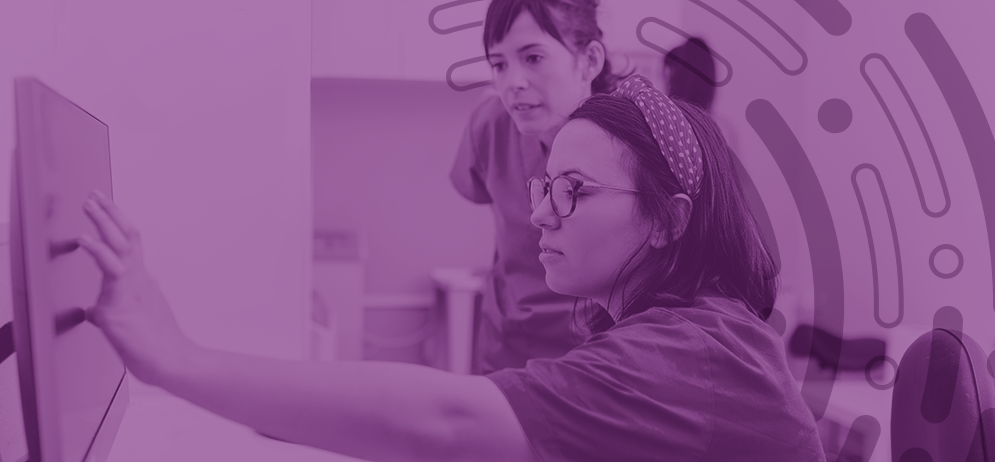School Nurse Directors and School Nurses have a lot on their plates, so while we wish we could say that getting an electronic health records system would give you time to relax, that wouldn’t be accurate.
But that might be just what the nurse ordered in order to make your case for why you need an EHR. Today we’ll explore 4 opportunities that become more attainable when you have an EHR.
- Making Use of Your Data
During every student encounter, you are collecting precious data. And of course that data is important for continuity of care, state reporting, and in the event of a lawsuit. But aside from those uses, there is a world of discoveries waiting for you in that data.
With an EHR, you’ll standardize documentation (with plenty of opportunity for notes, too!), so you can splice and dice data to your heart’s content. This makes it easy to dive into potential trends: whether they be trends for one student, across a campus, or an entire district. And those could be physical, mental, or behavioral trends.
Looking at trends can be helpful if you’re thinking about playground equipment or contagious diseases. And it can help other parts of your district better understand the important work you do. Because while you know you’re not simply adhering band-aids, not everyone realizes how often school nurses are the ones keeping students in school. Compiling student absence data with physical and mental health data can help you demonstrate how the presence of a school nurse often translates to lower rates of chronic absenteeism.
And school nurses are often the first line of defense for mental health crises. While many have stories of a “gut feeling” they trusted to support a student, you deserve to have data to back you up when you go to a parent and alert them that their student is suffering.
- Contemporaneous Charting
Best practices for charting suggest that charting in real time, known as contemporaneous charting, is far more trustworthy than summary charting (when you document later in the day). If you ever find yourself having to defend your documentation, it’s far easier to defend your notes if they were taken at the time of a visit.
If you’ve attended a NASN conference or read any of NASN’s materials, you’re likely familiar with the benefits of this real-time charting.
Of course, school nurses are busy, so it can be hard to squeeze in documentation when you’re seeing dozens of students in a day. But when you have tools like templates at your disposal, you get a little time back in your day. Similarly, if you need to send letters home to parents, you can do tasks like that in bulk (and check if parents/guardians have seen your note!) rather than one-by-one.
Hand-picked Content for you:
Why Every School Needs an EHR
Just like every school should have a school nurse, students benefit when schools have an electronic health records system. This blog post dives into why that’s the case.
- Take Advantage of Medicaid Reimbursements
If you’re not submitting for reimbursement, you’re not alone. Many districts don’t, especially for services outside of a child’s IEP. But when you have an electronic health records system, that’s the perfect starting place.
Rather than creating a separate process for billing Medicaid riddled with duplicate data entry, you can document once and extract the data. That means for the school nurse seeing a student, the nurse can go through their normal process for documentation, and then you can bill Medicaid for that service.
With the expansion of Free Care (being able to bill Medicaid for services outside of the IEP), it’s in your interest to make sure your district gets every dollar you’re owed from this federal funding source.
Then you can look at how much money you’re getting back from Medicaid and communicate that information to stakeholders so that they can understand how school nurses are making a difference on the district bottom line.
- Approach Legislators
School Nurses across the country are advocating for health care in their states, but that advocacy work takes time. Armed with data, leaders in school health might have more time to approach local governments for funding to support health in their schools. The Arizona School Nurse Access Program began with grant funding from the state, but that funding only ever made it across the finish line thanks to the work of school nurse leaders.
Your Next Steps
Ready to learn more about electronic health records systems? Check out this buyer’s guide. Frontline School Health Management is an award-winning system built for K-12.
Learn more about Frontline School Health Management here!
Elise Ozarowski
Elise is a writer and member of the award-winning content team at Frontline Education. A former member of Frontline’s events team, she is passionate about making connections, whether that be in person at events, online via social media or directly in her writing.
